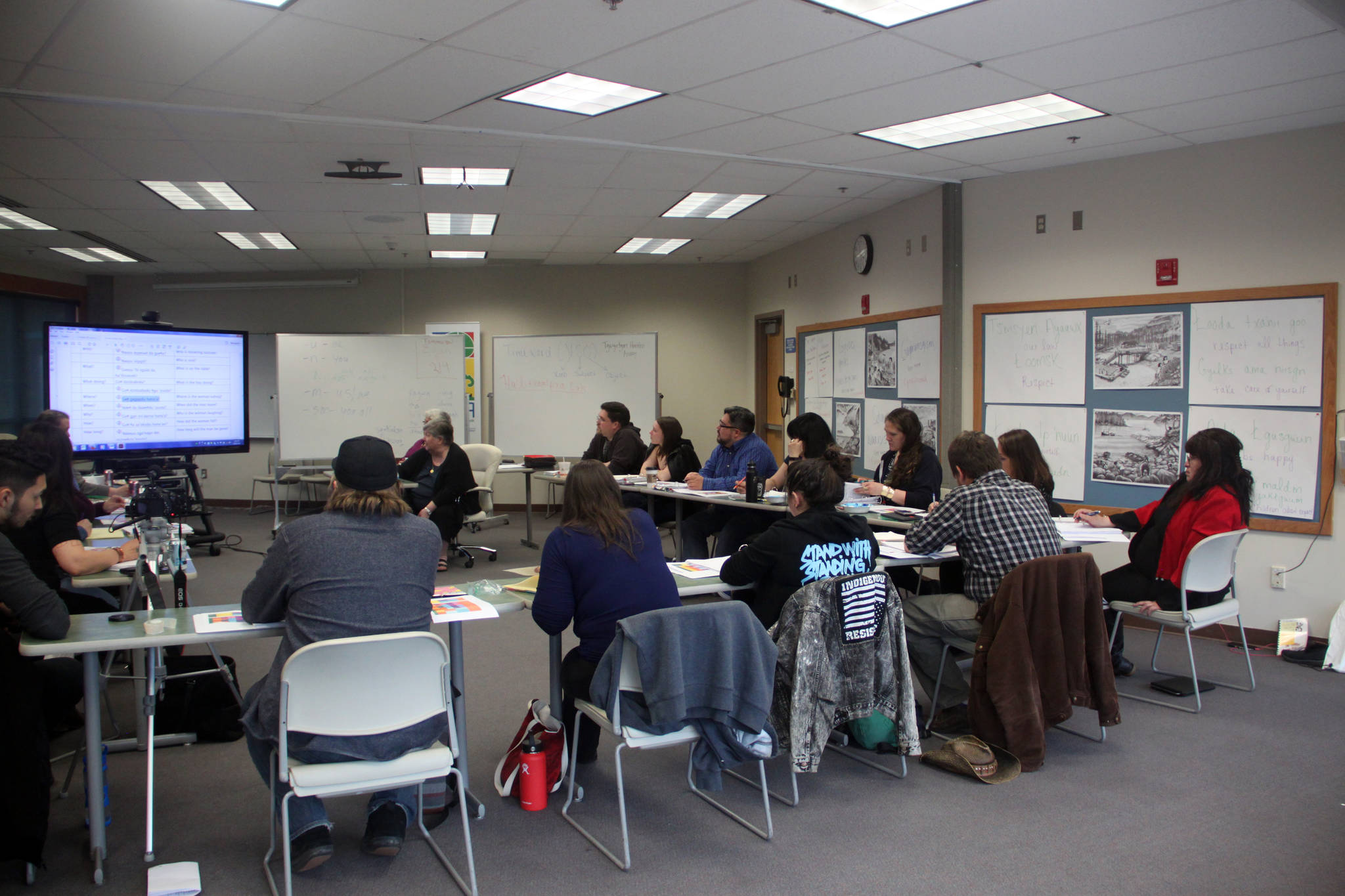There are only six fluent speakers of the Tsimshian language, Sm’algyax, left in Alaska. Interest in the language is on the rise, however.
“I try not to dwell on those numbers because I feel like, just within this class we have 20 people, most of whom are from our state who are dedicating their lives to Sm’algyax,” said Mique’l Dangeli, who carries the Tsimshian name Sm Łoodm ‘Nüüsm. “It’s not just about how many fluent speakers we have left but it’s about how many newer people are dedicating their lives to our language.”
Dangeli, an assistant professor in Alaska Native studies at University of Alaska Southeast, worked in conjunction with the campus to organize a five-day Sm’algyax grammar and language workshop in Juneau with fluent speaker Velna Nelson and linguist Margaret Anderson, from British Columbia, to help educate learners of the Tsimshian language.
Dangeli just completed her first year teaching Sm’algyax language classes at UAS, as well as Northwest Coast art history, which she received her undergraduate, master’s and Ph.D. in.
“My focus has always been Northwest Coast art,” she said. “But the way that I’m building the Northwest Coast art program here, it’s inclusive of language. Because I feel that in order to have a deeper understanding of our art and culture, you have to have an understanding of our language. It’s connecting them to an ancient body of knowledge that produced those art forms and cultural practices.”
With a limited number of speakers left in the state, and just over 100 fluent speakers in Canada, Dangeli felt it was vital to bring this knowledge to language learners from across the state and areas of Canada.
Participants came from Anchorage, Ketchikan, Metlakatla and British Columbia for the conference.
Students, who possessed basic Sm’algyax language skills, worked with Nelson and Anderson in grammar and sentences structure, taking turns reading sentences from their binders or the projector as the instructors coached them through proper usage.
“I just felt like we were all at this level where we were frustrated by not having opportunities to take advanced learning that would allow us to deepen our knowledge and communicate most effectively,” Dangeli said, “getting beyond the sayings and responses that are created for us as part of our materials and be able to talk about our everyday lives.”
This sentiment was felt throughout the class.
“I have been building my vocabulary and being able to use that in the sentence structures this week has been a huge help in my productivity as a learner,” said Kandi McGilton, Mangyepsa Gyipaayg, from Metlakatla.
Some students have worked with Nelson and Anderson before and are coming back for more.
“I’ve taken the class twice before,” said Gavin Hudson, Huk Tgini’itsga Xsgiik. “I could take it 10 more times and every time, you’ll pick up new information in addition to strengthening what you’ve already acquired. Learning vocabulary is really good and learning pronunciation is really good but at a certain point you start to plateau and you need the experience that these ladies have to offer to take the next step and go up another level.”
Not only did the conference bring together speakers in a positive learning environment but it brought together family and friends as well. Hudson and Dangeli are former high school classmates, both from Metlakatla.
“He’s like a brother to me,” Dangeli said.
This conference is the first of its kind in over 30 years, Dangeli said, and the first ever to include speakers from Canada.
“This gathering has been so inspiring to us,” Dangeli said. “It has been a catalyst for us to mobilize our efforts to strengthen our movement. We’ve been able to exchange teaching and learning resources and plan future gatherings.”
If all goes as planned, this conference will be the first of a continuation of annual Sm’algyax language conferences, held in different locations each year, Dangeli said.
Erin Granger is an intern for the Juneau Empire. Contact her at eringranger93@gmail.com

